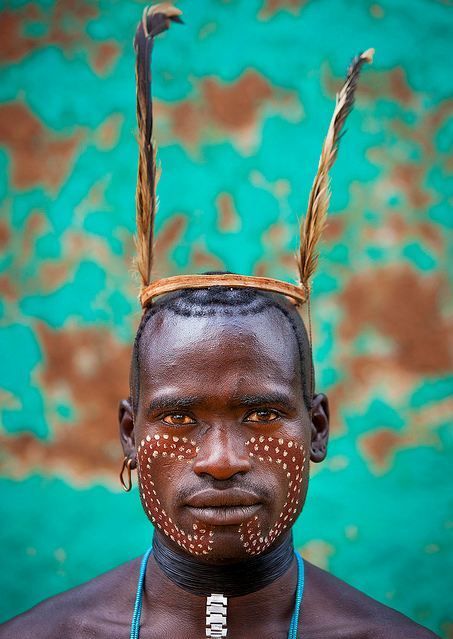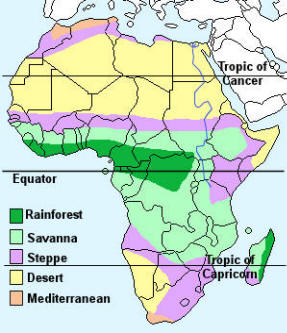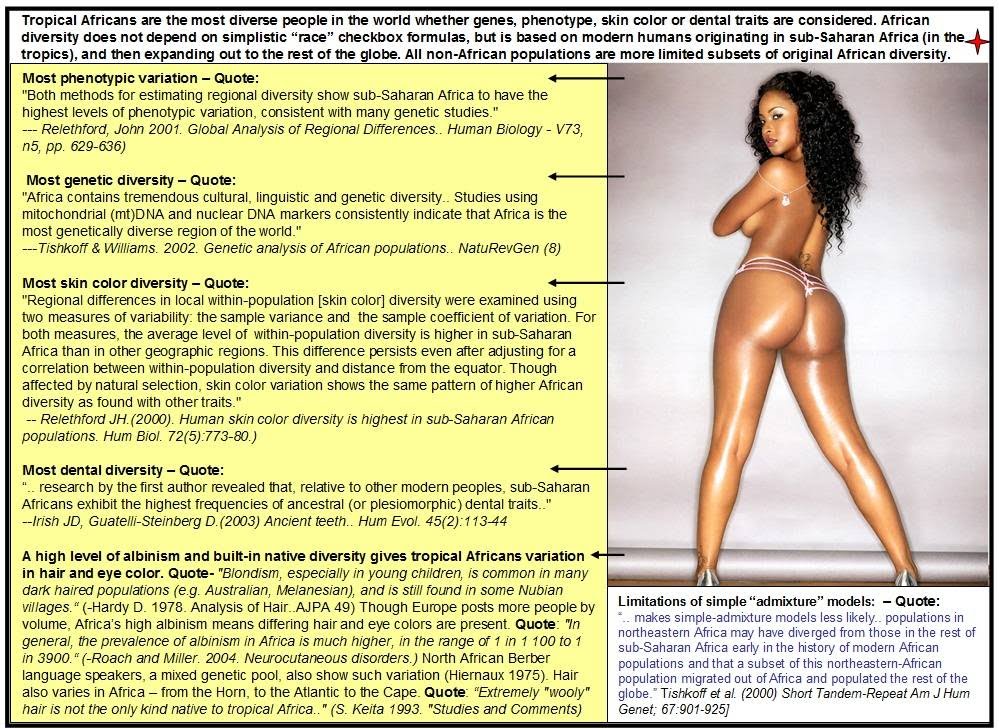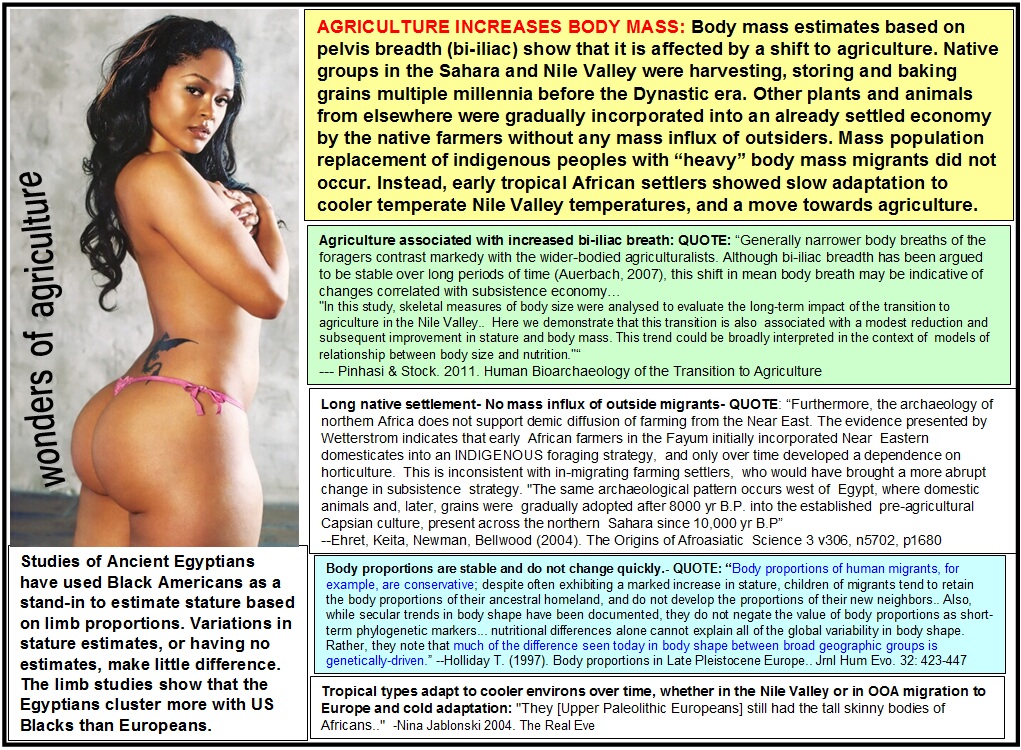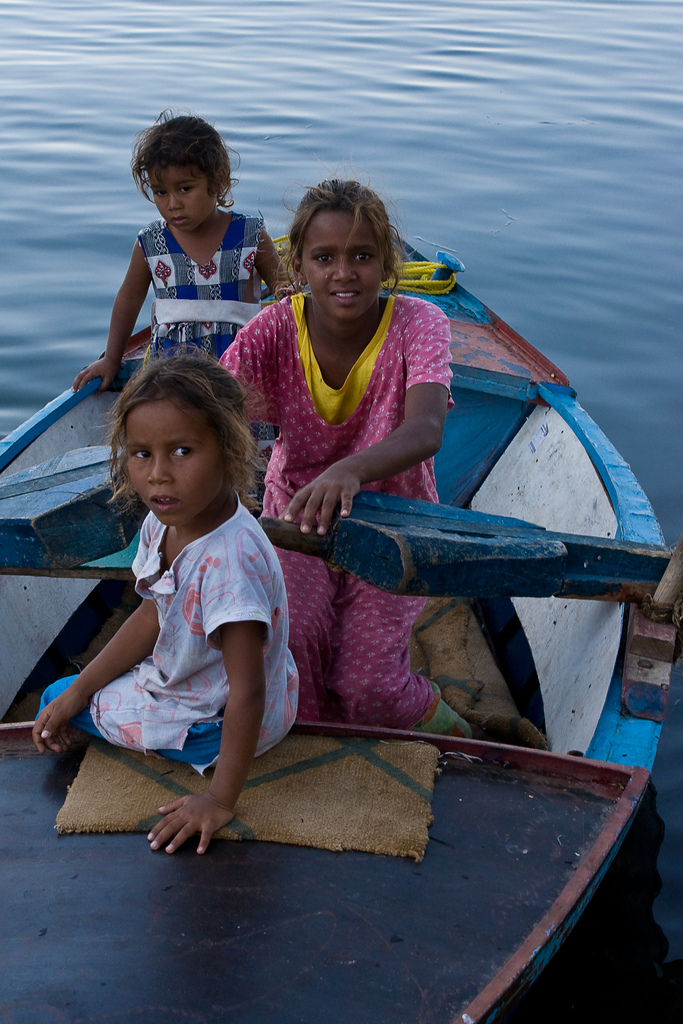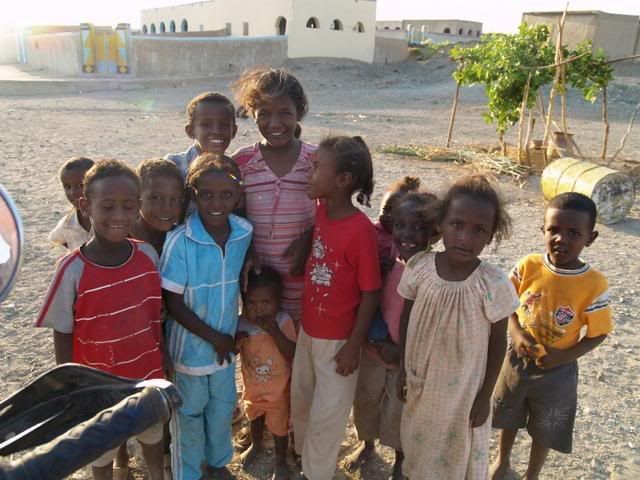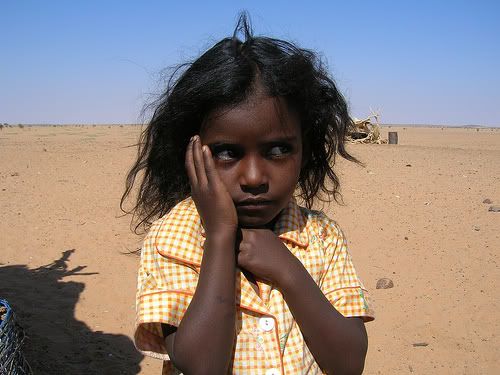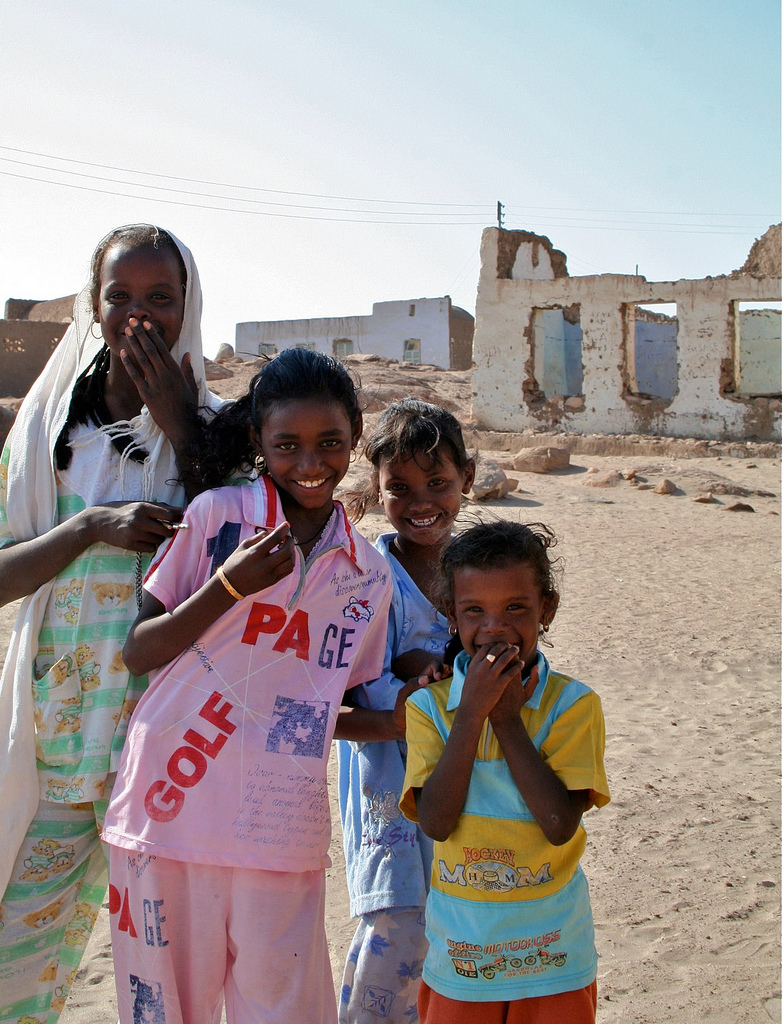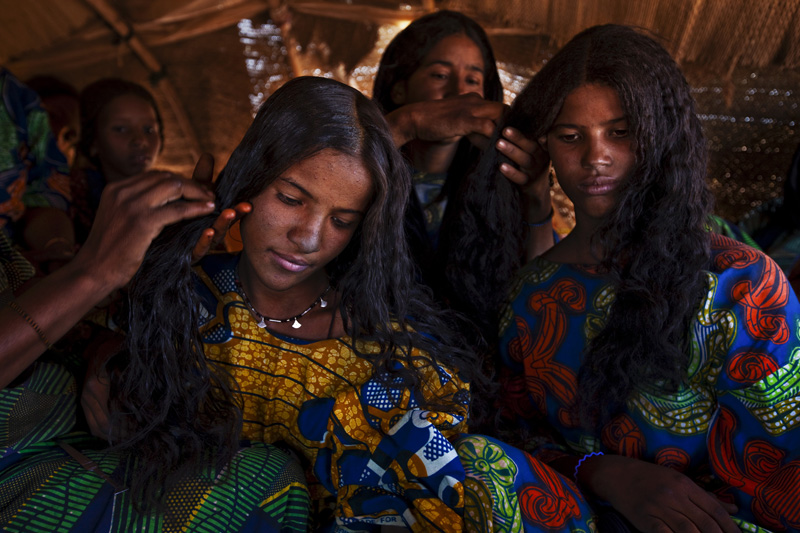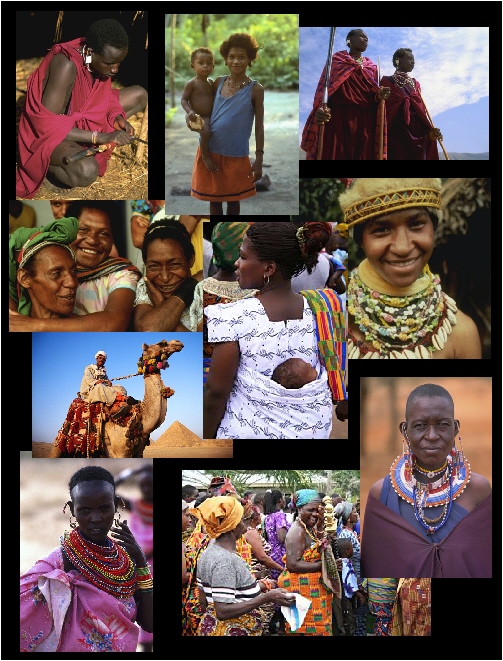Tropical Africans have variation in body breadth in numerous ways:
a) Millennia of adaptation in the cool, monsoon-swept Sahara
when it was a lush greenbelt before its arid phase, AND millennia
of adaptation in the cool subtropical Medit zone of Egypt
b) Millennia as pioneers and operators advanced food production
and forms of agriculture.
These factors cover the bases. No "Mediterraneans"
or "Middle Easterners" are needed to give the natives
diversity in body mass. in addition Africa's built in diversity
also more than covers all bases:
(c) The vast built-in genetic diversity of Africa
home of modern humanity- with the most genetic diversity on the planet
(d) Continual movement of numerous variants and blends
of tropical African peoples and tribes out of the
Saharan zone, East Africa etc into the Nile Valley.
Mass influxes of "Middle Easterners" or bogus "Mediterraneans"
are not needed to give tropical Africans diversity.
Such outsiders were always present, particularly in the later
stages but did not significantly affect the fundamental,
overall core population for millennia.
Anyways...
Let me give you guys an example of tropically adapted Africans vs Cold Adapted Eurasians(Europeans/Western Asians):
These Igbo's are
"light skinned" yet they are still indigenous tropically adapted:
A good portion of African Americans descent from Igbo's. Igbo's have a tendency to have lighter complexion. Does this now mean these African Americans aren't black? I even have heard some African Americans of lighter complexion state that they always have been light skinned, without admixture.
Then you have this....
Then we have cold adapted(European/West Asian).
Another example:
Tropical adapted Africans:
Cold adapted(non African):
 u just live for those debates huh
u just live for those debates huh






 Is that how a true queen looks like?
Is that how a true queen looks like?


